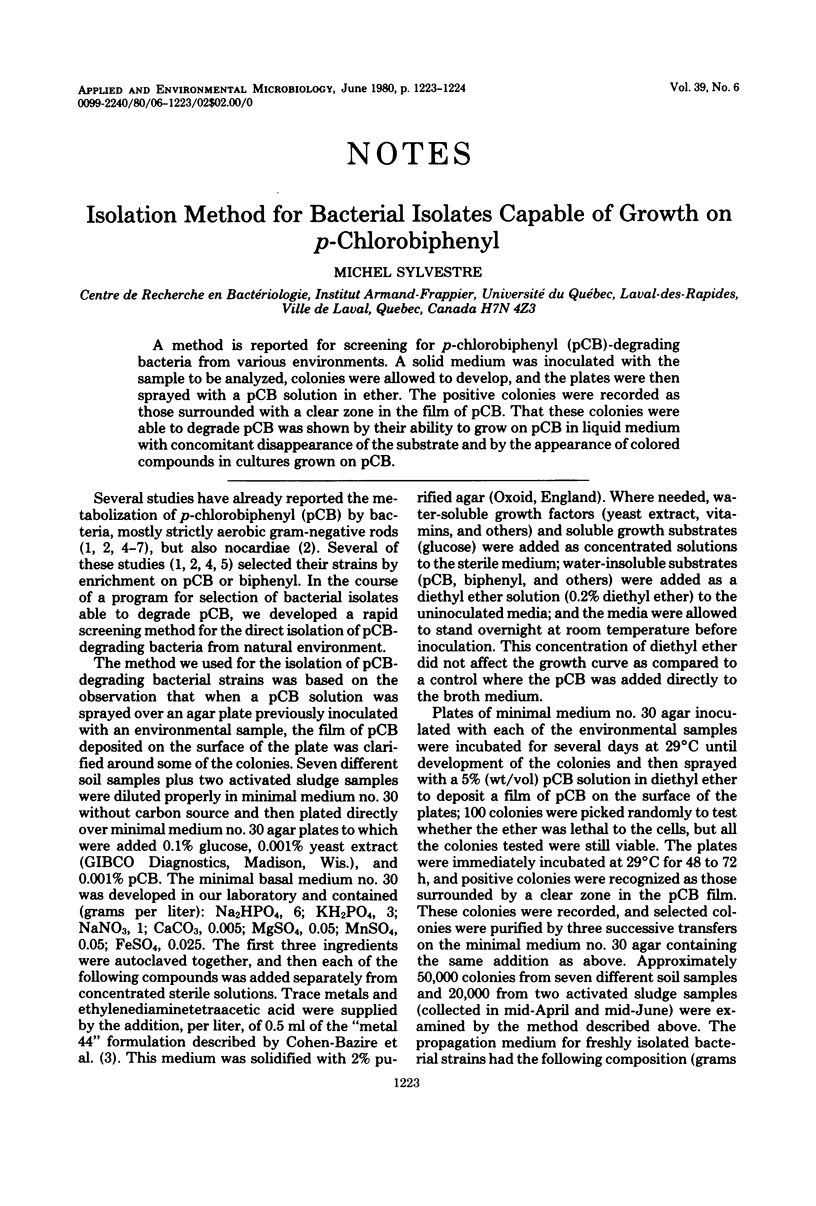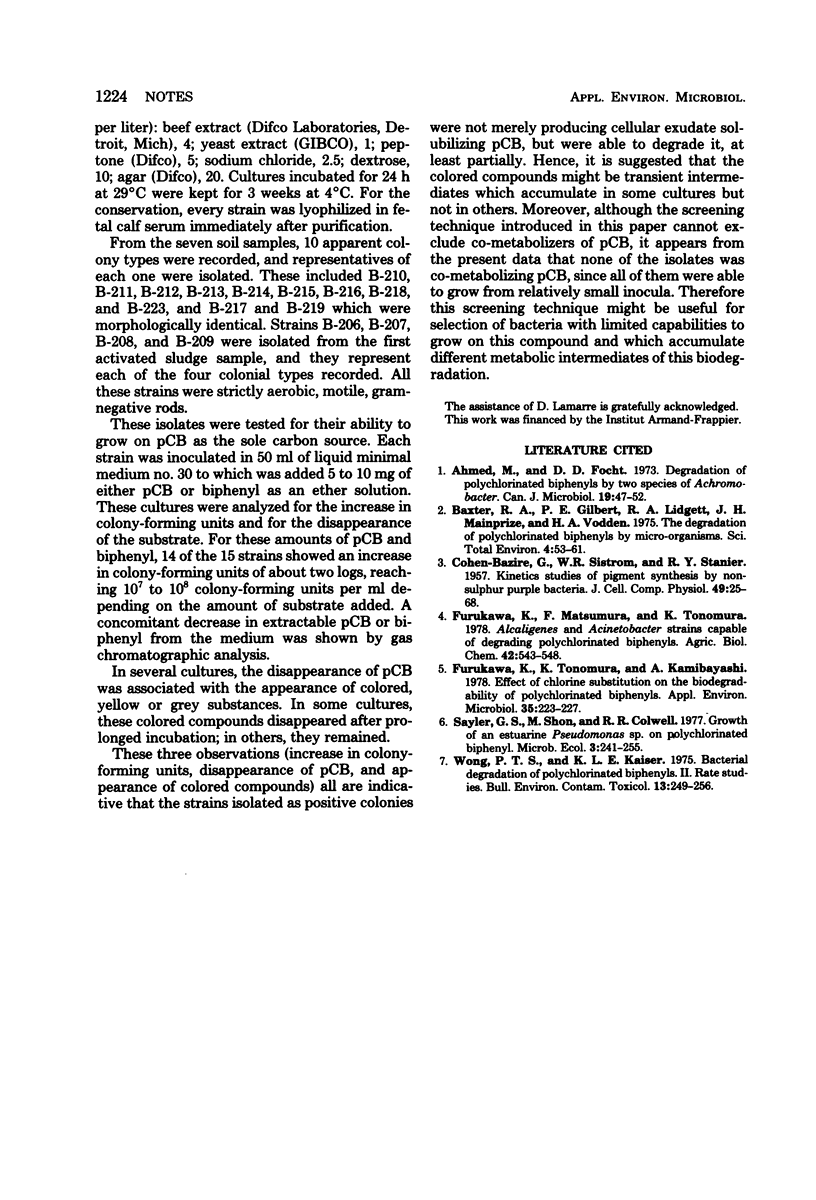Abstract
A method is reported for screening for p-chlorobiphenyl (pCB)-degrading bacteria from various environments. A solid medium was inoculated with the sample to be analyzed, colonies were allowed to develop, and the plates were then sprayed with a pCB solution in ether. The positive colonies were recorded as those surrounded with a clear zone in the film of pCB. That these colonies were able to degrade pCB was shown by their ability to grow on pCB in liquid medium with concomitant disappearance of the substrate and by the appearance of colored compounds in cultures grown on pCB.
Full text
PDF

Selected References
These references are in PubMed. This may not be the complete list of references from this article.
- Ahmed M., Focht D. D. Degradation of polychlorinated biphenyls by two species of Achromobacter. Can J Microbiol. 1973 Jan;19(1):47–52. doi: 10.1139/m73-007. [DOI] [PubMed] [Google Scholar]
- Baxter R. A., Gilbert P. E., Lidgett R. A., Mainprize J. H., Vodden H. A. The degradation of polychlorinated biphenyls by micro-organisms. Sci Total Environ. 1975 May;4(1):53–61. doi: 10.1016/0048-9697(75)90014-5. [DOI] [PubMed] [Google Scholar]
- COHEN-BAZIRE G., SISTROM W. R., STANIER R. Y. Kinetic studies of pigment synthesis by non-sulfur purple bacteria. J Cell Physiol. 1957 Feb;49(1):25–68. doi: 10.1002/jcp.1030490104. [DOI] [PubMed] [Google Scholar]
- Furukawa K., Tonomura K., Kamibayashi A. Effect of chlorine substitution on the biodegradability of polychlorinated biphenyls. Appl Environ Microbiol. 1978 Feb;35(2):223–227. doi: 10.1128/aem.35.2.223-227.1978. [DOI] [PMC free article] [PubMed] [Google Scholar]
- Wong P. T., Kaiser K. L. Bacterial degradation of polychlorinated biphenyls II. Rate studies. Bull Environ Contam Toxicol. 1975 Feb;13(2):249–255. doi: 10.1007/BF01721747. [DOI] [PubMed] [Google Scholar]


